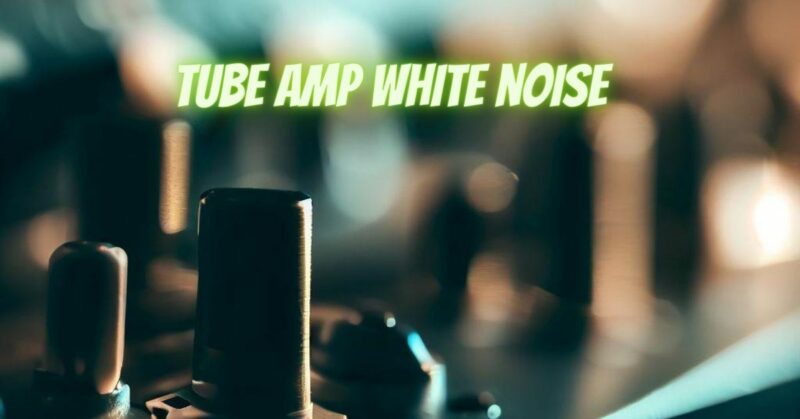Tube amplifiers are renowned for their warm and dynamic sound reproduction, but occasionally, they may introduce an unwanted element: white noise. White noise, characterized by a hissing or static-like sound, can be distracting and diminish the overall listening experience. In this article, we will explore common causes of white noise in a tube amp and provide practical solutions to help you minimize or eliminate this undesirable issue.
- Tube Health and Selection:
a. Tube Condition: The condition of the tubes in your amplifier can significantly impact the presence of white noise. Over time, tubes may wear out or develop issues that contribute to noise generation. Inspect the tubes for signs of degradation, such as excessive microphonics or visible signs of damage. Consider replacing worn-out or faulty tubes with fresh, high-quality replacements to reduce white noise.
b. Tube Matching: Using mismatched tubes in your amplifier can lead to imbalances and increased noise. Ensure that the tubes are matched within the recommended specifications for your amplifier. Matched tubes minimize variations in performance and contribute to a quieter operation.
- Tube Amp Grounding:
a. Grounding Scheme: Proper grounding is essential for minimizing noise in a tube amplifier. Ensure that all components and connections are correctly grounded according to the manufacturer’s instructions. Poor grounding can introduce hum and other noise issues. Consult a professional or the amplifier’s manual if you are unsure about the grounding scheme.
b. Ground Loops: Ground loops occur when multiple devices in an audio system have different ground potentials, leading to noise issues. If you suspect a ground loop, try isolating the amplifier from other devices by using a ground loop isolator or a dedicated power outlet.
- Shielding and Interference:
a. Signal Cables: Use high-quality shielded cables for your guitar or audio sources. Shielded cables help minimize interference from external electrical signals or electromagnetic radiation that can contribute to white noise. Avoid running signal cables close to power cables or other potential sources of interference.
b. Environmental Factors: Electrical appliances, fluorescent lights, or other electronics in close proximity to the amplifier can introduce interference and white noise. Experiment with relocating or turning off such devices to identify if they are the source of the problem.
- Preamp Tubes and Gain Staging:
a. Preamp Tube Selection: Different preamp tubes can contribute to variations in noise levels. Experiment with different preamp tubes known for lower noise characteristics to reduce white noise. Consult experts or online communities to identify suitable options for your specific amplifier model.
b. Gain Staging: Improper gain staging can amplify noise in the signal chain. Ensure that the gain settings on your amplifier are appropriately adjusted. Avoid excessive gain levels, which can lead to noise amplification. Experiment with different gain settings to find the optimal balance between signal strength and noise.
- Room and Power Considerations:
a. Power Quality: Inadequate power supply or fluctuating voltage can introduce noise into the amplifier. Use a reliable power source and consider using power conditioners or voltage regulators to ensure stable and clean power delivery to the amplifier.
b. Room Acoustics: Room acoustics can contribute to the perception of white noise. Consider adding acoustic treatments such as diffusers, absorbers, or bass traps to address reflections and reverberations that may exacerbate the noise issue.
Conclusion:
White noise in a tube amplifier can be an unwanted distraction, but with careful troubleshooting, you can minimize or eliminate this issue. By checking tube health, ensuring proper grounding, using shielded cables, selecting low-noise preamp tubes, optimizing gain staging, and considering room and power conditions, you can tame the hiss and enjoy the pure and dynamic sound that tube amplifiers are cherished for. Remember to consult experts or seek professional assistance if needed, as addressing white noise may require specialized knowledge or equipment.


